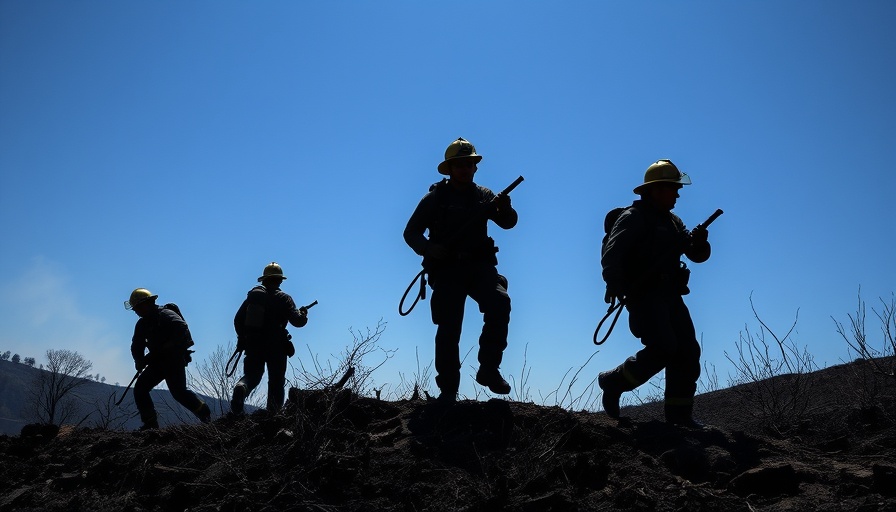
National Guard Troops in California: Pressing Needs Amid Protest Dynamics
The decision to request the return of 200 National Guard troops back to California’s command highlights crucial elements affecting both community safety and wildfire preparedness. The California Governor Gavin Newsom has made it clear that the current deployment of troops assisting in immigration enforcement undermines essential firefighting operations just as fire season approaches its peak.
Understanding the Historical Context of Military Troop Deployment
Trump’s federalization of more than 4,000 National Guard troops marked a significant shift in the military's role in domestic issues, especially in states like California. Historically, the National Guard has been utilized for emergency responses, notably during wildfire crises. This deployment for immigration-related protests has raised eyebrows, prompting concerns over whether military resources are being effectively allocated. This juxtaposition of military purpose underscores the need for a more focused approach to emergencies.
The Relevance of National Guard to California Communities
For residents of Bakersfield and surrounding areas, the National Guard's ability to respond swiftly to wildfires is crucial. With more than 300 members of Task Force Rattlesnake being pulled away from their primary firefighting duties, public safety hangs in the balance. The looming fire season, which experts predict to be severe, directly impacts local communities. Families living near wildfire-prone areas should understand how limited firefighting preparedness could lead to risks not only to homes but to their health and safety.
Shifting Political Landscape and Its Impact on Local Troops
Governor Newsom's critical stance toward the Trump administration's handling of the National Guard emphasizes a growing tension between federal and state governance. The legal battles over federal troop deployment reflect broader issues of accountability, community trust, and emergency preparedness. As sentiment grows against these policies, communities may find themselves advocating for more localized control over military resources during critical periods.
Future Predictions: What Could Be Next for National Guard Troops?
The current dialogue surrounding National Guard troop redeployment raises important questions about the future of military involvement in domestic issues. If the request by the military commander is granted, it could set a precedent for how states negotiate troop allocations during emergencies. This could enhance firefighting capabilities in California and change overall policing dynamics concerning immigration enforcement, potentially leading to a stricter separation of military roles.
Emotional Impact: Community Voices on Military Presence
For many in Bakersfield, National Guard troops represent a safety net in times of disaster. Yet the visibility of military presence for immigration-related activities stirs mixed emotions. Residents may feel alienated or fearful, prompting a need for open dialogue about the intentions and strategies behind troop deployment. Local community leaders can serve as bridges, guiding discussions to focus on fostering safety and community bonds during challenging times.
Actionable Insights: Ensuring Community Preparedness
As the situation unfolds, it’s critical for residents to actively engage in community preparedness. This can be achieved through advocating for local fire safety measures, participating in town hall discussions, and staying informed about local governance. Understanding the implications of troop relocations may empower residents to take proactive steps to ensure their community's safety in times of need.
In conclusion, the discussion surrounding the National Guard highlights the necessity for balanced military engagement that prioritizes community safety over political divides. As residents of Bakersfield, staying informed and engaged can lead to a safer and more prepared community when disaster strikes.
 Add Row
Add Row  Add
Add 



Write A Comment